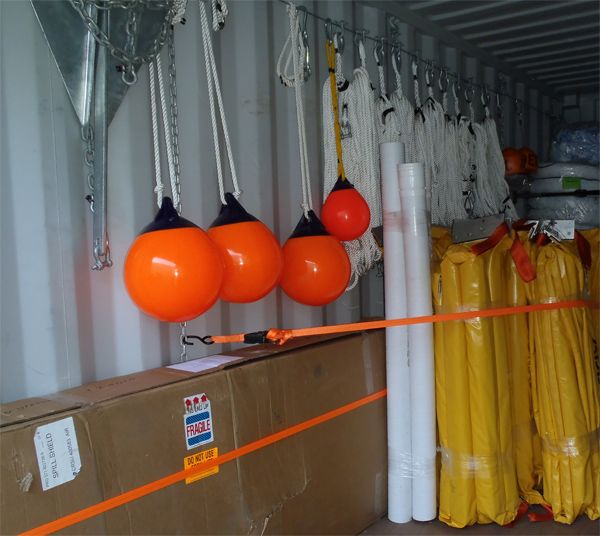Community Spill Response Agreements and Local Response Equipment

On average, approximately 2,000 oil and hazardous substance spills are reported to the Alaska Department of Environmental Conservation (DEC) every year. These are typically from commercial fuel facilities, tanker trucks, freighters, fishing boats, leaking storage tanks, discarded waste, abandoned drums, and mystery spills and can cause serious damage to public health, property, and the environment. Because of the state’s vast size and remoteness, local residents are frequently the first line of defense in responding to oil or hazardous substance releases since outside responders cannot typically arrive in time to deal with immediate impacts. Thus, Alaska's communities play an important role in minimizing oil and hazardous substance spill impacts. According to the January 1990 report by the Alaska Oil Spill Commission, entitled Spill: The Wreck of the Exxon Valdez,
"A substantive role should be given to the affected communities in any response system... local interests, local knowledge and experience... often made the community-based work force the most efficient available."
Recognizing the importance of local involvement, DEC works with communities to provide coordinated and effective spill response. By forging partnerships at the local level, DEC and local residents will be better prepared to respond to incidents. According to AS 46.04.20(e) and 46.09.020(e), the Commissioner shall enter into agreements with the Environmental Protection Agency, and may enter into agreements with other persons and municipalities in order to facilitate a coordinated and effective response to hazardous substance releases in the state. As the Commissioner’s executors, State On-Scene Coordinators (SOSCs) typically manage these Community Spill Response Agreements (CSRAs) for the Commissioner and ensure these agreements are maintained or updated, as necessary.
The Department will compensate CSRA partners for expenses above and beyond their normal operating costs when they’re responding to a spill that poses an imminent and substantial threat to the public health or welfare, or to the environment as long as the CSRA partner did not cause the spill, or potential spill (per AS 46.08.070). If a community has a signed CSRA and wants to be reimbursed for their time, services, or goods, they need to make this request in writing and get written approval before committing resources or performing services. The SOSC or his/her representative normally gives written approval, but verbal approval may suffice in an emergency.
A CSRA only applies when a community representative makes a good faith attempt to seek pre-approval from the SOSC or his/her representative prior to accessing one of DEC’s spill response containers (see map) to use State supplies. Then, the community representative keeps an inventory of supplies that were used, so they can either replace these supplies or arrange for the State to do so, as determined by DEC. A follow-up report to the SOSC describes activities that were performed, supplies that were used, and any non-disposable equipment that became contaminated. This allows DEC to decontaminate equipment and/or perform periodic maintenance. Documentation/evidence (including pictures) must be available to verify work and/or services were performed.
Map of Community Spill Response Agreements, Response Equipment Containers, and Emergency Towing Packages in Alaska


Response Container Access Procedures
- Call DEC to report the spill, and identify potentially responsible parties.
- Personnel from the local fire department, police department, harbormaster’s office, or even conex key custodian can assist with reporting. These personnel can also gather relevant information.
- Ask DEC personnel to speak with a State On-Scene Coordinator (or their representative) after reporting initial spill details.
- Explain the size and nature of the spill, and request access to the spill response container. You must get prior approval to use State equipment.
- Get keys from your local conex custodian.
- Fill out the access and supply use forms that are located in the front, right corner of every conex. This helps to ensure supplies are replaced and/or maintained.
- Keep the State On-Scene Coordinator (or representative) informed about estimated supply use.
- Use necessary supplies.
- Update State On-Scene Coordinator about spill status and supply use when the initial response is complete.
- Return keys to the local conex custodian.
- Submit your summary and pictures to the SOSC or their representative.
Proper authorization to access a conex, documentation, and after-action reporting typically negates cost recovery when you are not responsible for spillage.
To view the contents of DEC's response containers, visit the Equipment Inventories by Community webpage

 Indicates an external site.
Indicates an external site.